If you’re looking to add vibrant bursts of color and timeless elegance to your garden, poppies are a perfect choice. Known for their bold, papery blooms and whimsical sway in the breeze, poppies instantly brighten any flower bed or border. These easy-to-grow plants come in a variety of shapes, sizes, and shades from delicate whites and pastels to fiery reds and oranges.
Below are eight stunning poppy species that will turn your outdoor area into a bright, attention-grabbing oasis:
1. Papaver somniferum (Opium Poppy)
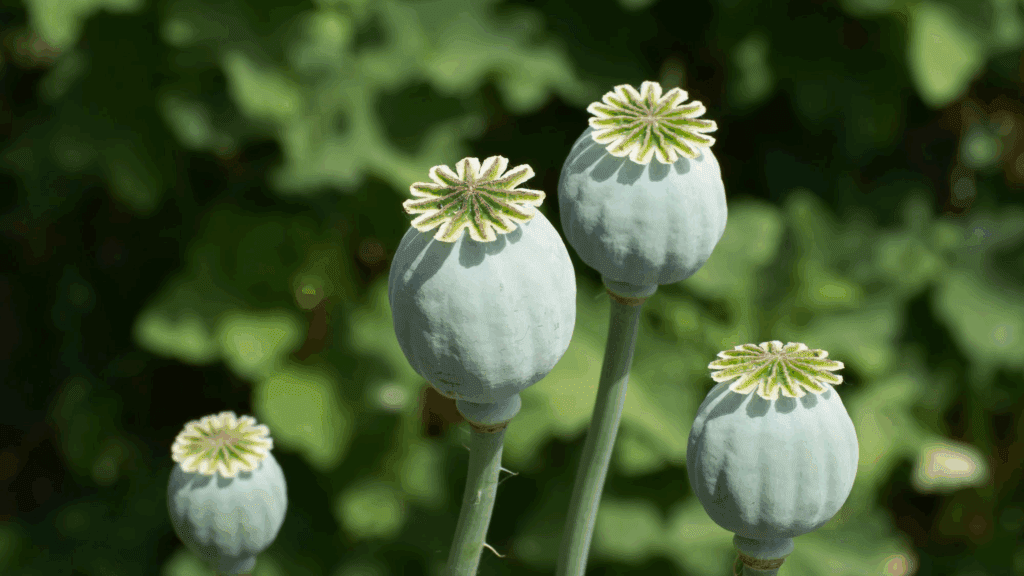
The Opium Poppy boasts huge, bowl-shaped flowers that vary from white and pink to lavender and purple. It has ruffled petals and silvery blue-green leaves, providing a fantastic contrast in the garden. In addition to its appearance, this species has been around for centuries in both herbal medicine and ornamental horticulture.
Flowering from late spring through early summer, it also has showy seed pods usually utilized in dried floral bouquets. Poppies prefer full sun and well-drained land.
2. Papaver orientale (Oriental Poppy)
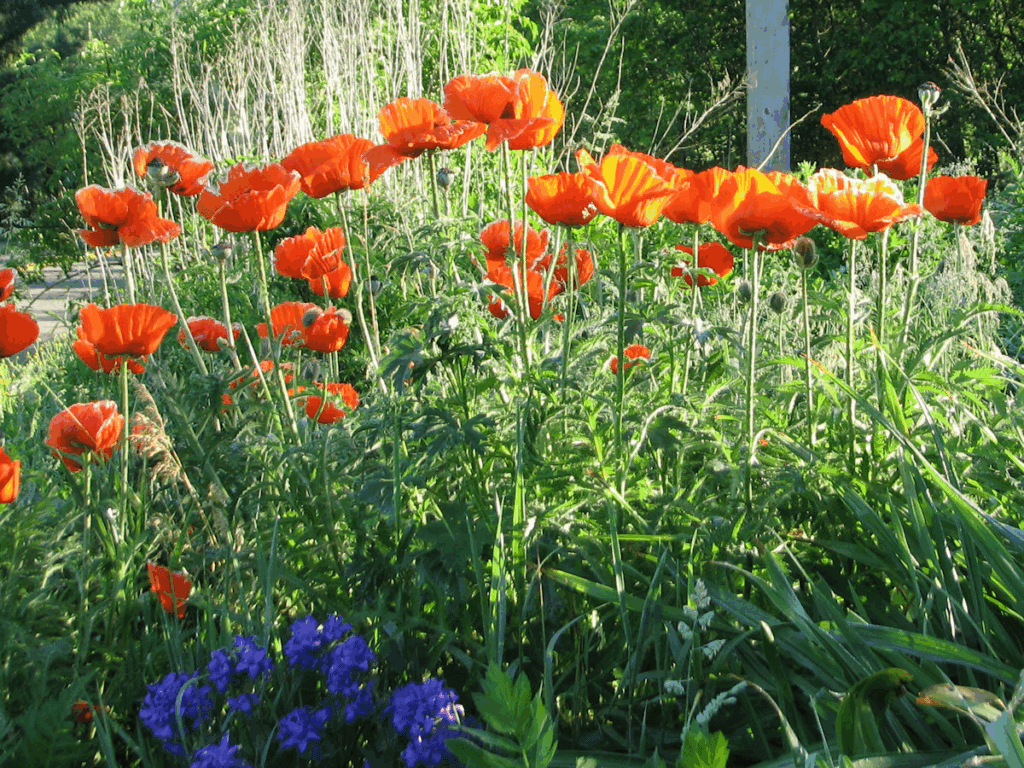
Oriental Poppies are perhaps the most dramatic perennial blooms you’ll be able to grow. Their massive, silky flowers (6 inches in diameter) usually display stunning dark blotches on the base of every petal.
Colors range from fiery scarlet and orange to soft pink and pure white. These hardy plants love sunny spots and bloom in late spring, dying back in midsummer before returning the following year. Perfect for cottage gardens or as a showy focal point.
3. Papaver rhoeas (Corn Poppy / Flanders Poppy)
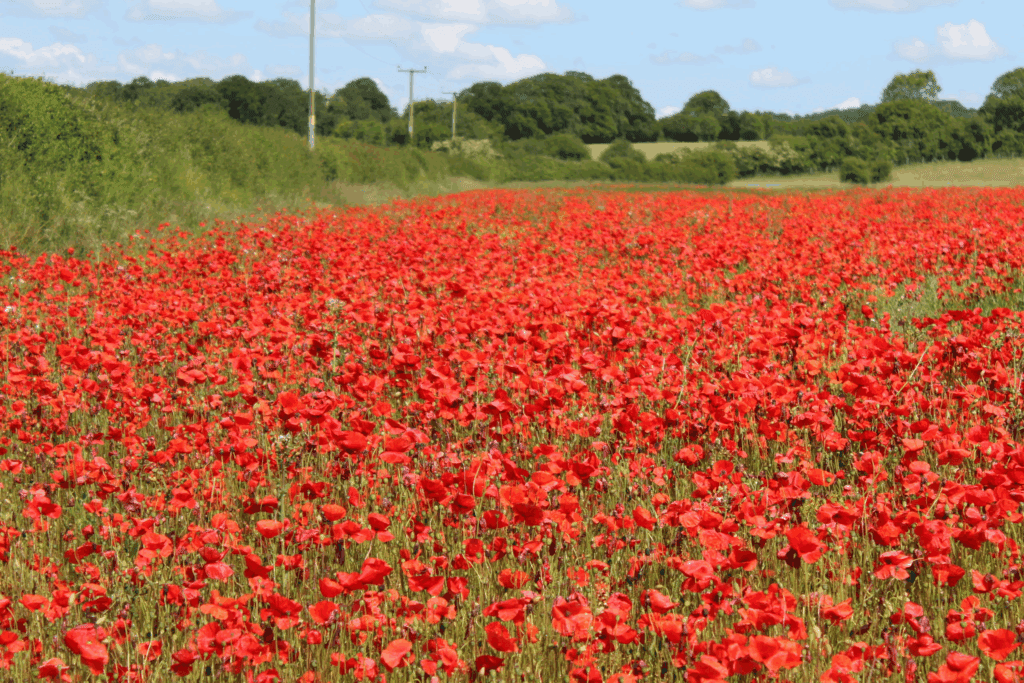
The Corn Poppy is cherished for its plain, scarlet flowers with classic black centers — a classic symbol of remembrance. This annual poppy flowers from late spring through early summer, growing in wildflower fields and loose plantings where it readily self-seeds.
Its sunny flowers entice bees and butterflies, an added bonus for planting fields of brilliant color and helping native pollinators.
4. Eschscholzia californica (California Poppy)
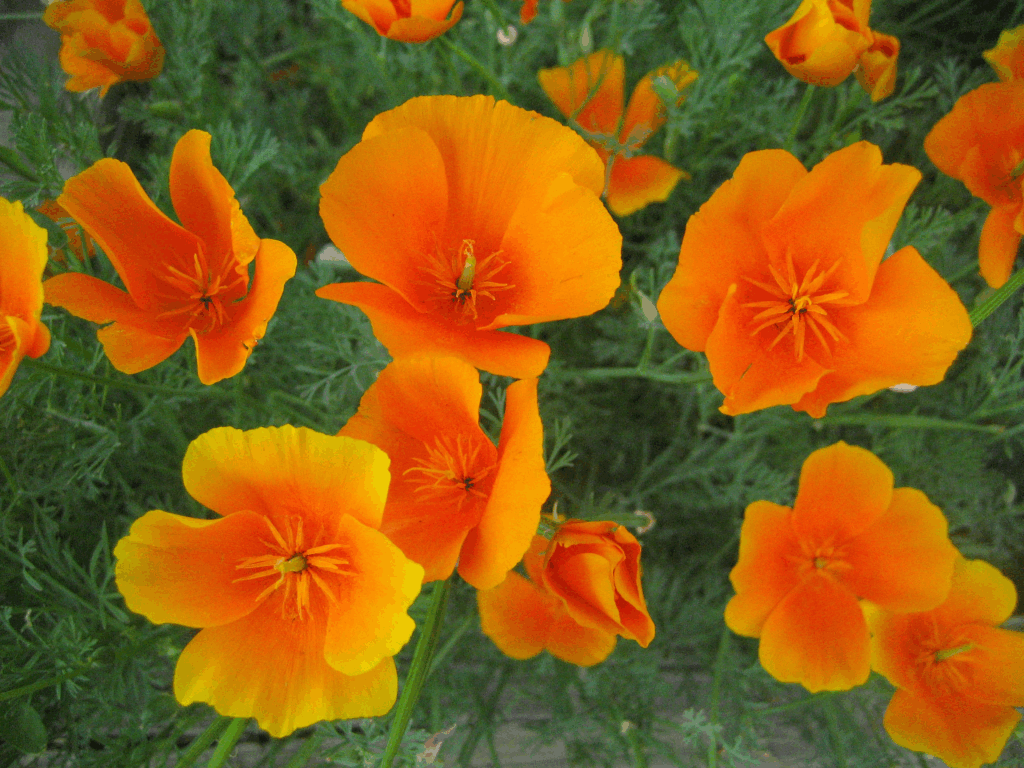
California Poppies produce cheerful, cup-shaped orange, yellow, cream, or even pink flowers. Drought-tolerant and sun-loving, they flower from spring to fall when conditions are right.
Perfect for rock gardens, borders, and wildflower meadows, their feathery blue-green leaves provide texture even when not producing flowers. Self-seeding and low-maintenance, they deliver a long-lasting show year after year.
5. Papaver nudicaule (Iceland Poppy)

The dainty Iceland Poppy adds pale pastel hues and subtle charm to blue-climate gardens. Its corrugated, semi-translucent petals of yellow, orange, coral, and white float elegantly above clumps of fern-like leaves.
Flowering in late spring to early summer, Iceland Poppies are ideal for borders, pots, and cutting gardens. They like cool conditions and moist, well-drained soil — and their dancing flowers entice butterflies.
6. Meconopsis betonicifolia (Himalayan Blue Poppy)

The rare Himalayan Blue Poppy is one of the most mesmerizing flowers for cool, shaded borders. Satiny blue flowers with golden centers make these flowers almost seem mythical.
Indigenous to the Himalayas, this poppy needs rich, moist, well-draining soil and partial shade to grow. While somewhat difficult to cultivate, the payoff from these bright blue flowers in late spring through early summer is well worth the effort.
7. Papaver atlanticum (Moroccan Poppy)
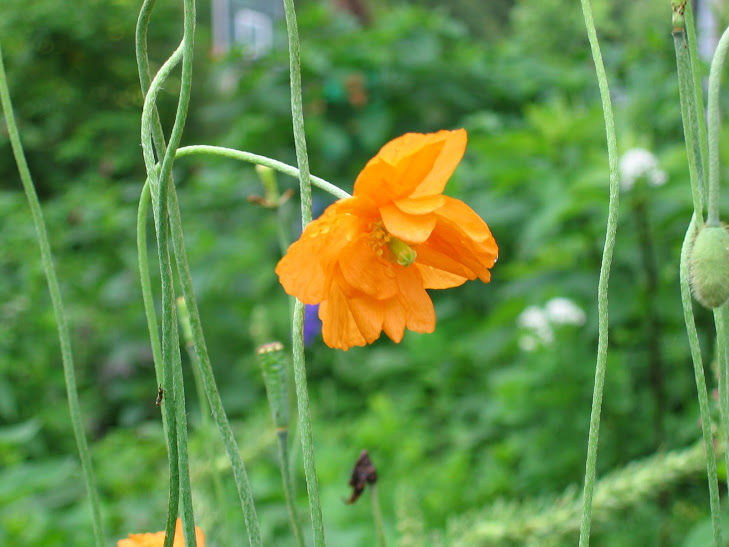
The Moroccan Poppy is a dainty, perennial species with orange or apricot-colored flowers and lightly hairy leaves. It loves dry, sunny areas, so it is perfect for rock gardens, Mediterranean gardens, or gravel beds.
With flowers all summer long, Moroccan Poppies are tough, drought-resistant, and low-maintenance, with a tendency to reseed freely — great for a naturalized appearance.
8. Stylomecon heterophylla (Wind Poppy)

California native, the Wind Poppy is a delicate and charming wildflower with elongated stems and radiant orange petals with a dark center. Blooming in late spring to early summer, it prefers shade or partial shade woodland gardens, as opposed to its sun-drenched relatives.
With airy, dancing blooms, Wind Poppies add light and motion to the garden — ideal for naturalized landscapes or native plantings.
Final Thoughts
Poppies are not just pretty faces — they add life, movement, and vibrancy to your garden. Whether you are trying to achieve a lush cottage look, a colorful wildflower meadow, or a spartan rock garden, there is a poppy species to fit every place.
Also Read : 5 Biophilic Bathrooms That Welcome the Splendor of Nature Inside




